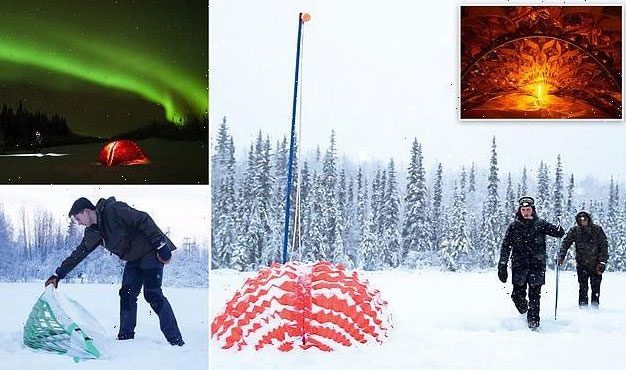Students at the Royal Danish Academy have drawn inspiration from polar bears to design a survival tent that helps individuals in distress endure harsh snowy conditions.
Exploring the Arctic is certainly not a journey for everyone. Typically, only experienced and courageous explorers embark on such adventures.
However, due to the extreme weather conditions in the Arctic, no one can predict what will happen, and the thought of being stranded is something no one wants to consider.

The tent can help individuals in distress withstand harsh conditions while waiting for rescue. (Photo: Educational Design Award)
But if such a situation occurs, a temporary shelter could help an explorer survive until they are rescued.
Thinking about this issue, along with inspiration from the habitats of polar bears, a group of students from the Royal Danish Academy has created a special survival tent.
Henry Glogau and Samuel Barratt, the lead students of the research, shared: “What would you do if you found yourself stranded in extreme conditions like those in the Arctic? With no cell service, limited food supplies, no communication, and temperatures below 0 degrees Celsius, hypothermia is a serious threat, and help from outside may take hours. Our design helps explorers feel more secure and protects their health while they wait.”
According to the research team, in this case, snow should be viewed as a building material rather than a burden or obstacle. Similar to animals like polar bears or even the Inuit people, who have lived in snow-covered caves.

Tourists viewing the Northern Lights use the survival tent to stay warm.
The team tested the rescue tent in Alaska for about a month. The tent is made from mylar material, with an outer skin design resembling a piece of Japanese origami paper to secure the tent, block snow, and retain warmth inside. The tent can maintain an average temperature difference of 37 degrees Celsius between the inside and outside, capable of withstanding snowfall of up to 40 cm. Conventional winter tents typically provide a temperature difference of only 13 degrees Celsius.
Despite its seemingly fragile appearance, the creators assure that it remains intact in blizzard conditions, able to support a 70 kg person standing on top due to the fiberglass lattice structure in the internal connections, deployed simultaneously with the origami shell on the outside.
In the future, emergency survival tents will be placed along checkpoints and hiking trails in areas with frigid winters and low temperatures.
The tent design by Henry Glogau and Samuel Barratt won the highest award at the Educational Design Award in the Product Design category.



















































